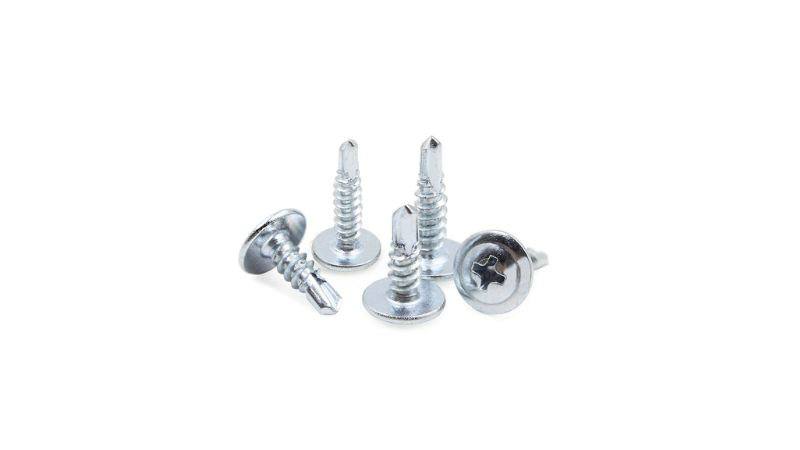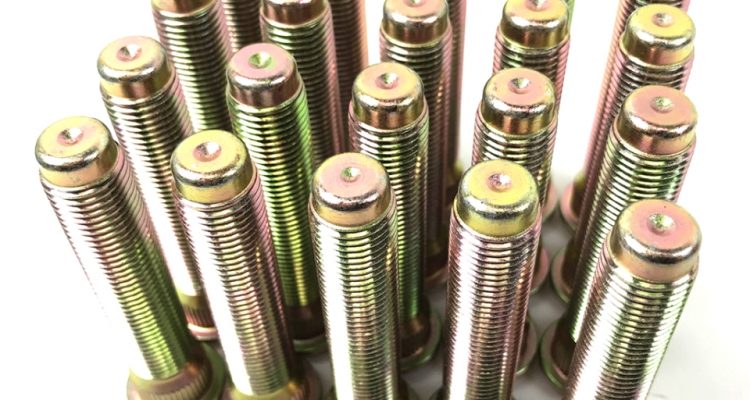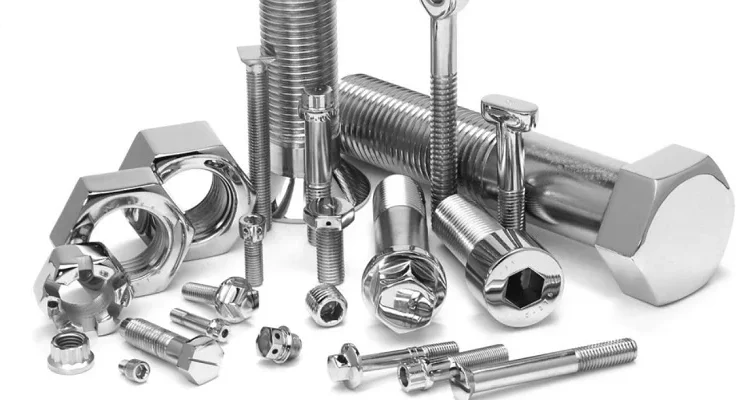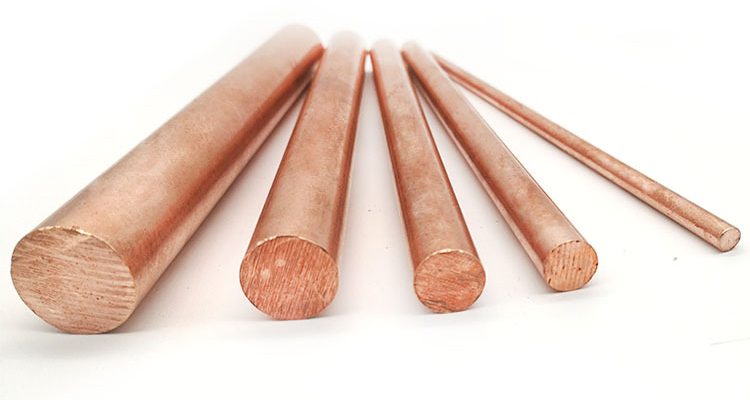
What Are the Primary Uses of Sheet Metal Screws in the Construction Industry
In the construction industry, sheet metal screws primarily secure metal sheets. For example, self-tapping screws are used for metal roofs and wall panels of 0.5mm to 1.5mm thickness, costing about $4 per 100 pieces.
Common Types of Sheet Metal Screws in the Construction Industry
There are many types of sheet metal screws, each with its specific use and characteristics. Below are detailed introductions to some common types, prices, and usage scenarios.
Self-Tapping Screws are extensively used for attachment of metal to wood or most commonly, in assembly and installation applications. With the thread pattern, they can fasten in metal sheet materials without a pilot hole. One amongst them is a price tag of about $4 per 100 pcs for #8 x I-inch self-tapping screws used largely on metal roofs and wall panels. These screws typically used with metal sheets having a thickness of 0.5mm to 1.5mm; Between 5,000 and 10,000 self-tapping screws might be used in a medium-sized commercial construction project.
Self-Drilling Screws have a drill-shaped tip suitable for thicker metal sheets, completing the drilling and fastening process in one operation, significantly improving construction efficiency. These are #10 x 1-1/2 inch self-drilling screws, and they run approximately $7 per hundred (also good for steel structure work). Screws are designed to easily screw into sheet metal (#4 x 5/8″) up to a gauge of 6mm. For high-rise steel structure construction, the number of holes required at each node may be 20 to 30 on average, and each building can reach hundreds of thousands.
Hex Head Screws have stronger torque and more secure fastening capabilities, typically used where high-strength connections are needed. 1/4 inch x 1-inch hex head screws are $5 per 100, used to fasten some large steel structures and heavy machinery, usually connected with steel plates from 5mm to 10 mm. Such screws are used in bridge construction to fix the main steel beams and support structures, with tens – or even hundreds of thousands of these screws used in these bridges.
Stainless Steel Screws, due to their excellent rust resistance, are often used in environments requiring corrosion resistance. #10 x 1-1/4 in Stainless Steel Screws – External Wall/Flooring, $12 / pack of a hundred to secure external wall panels and roofing materials (suitable for metal sheets between 1mm ~3 mm) such as coastal city exterior wall installation. Tens of thousands can be chosen for project fixation to achieve anti-corrosion effects on seawater and humid air.
Screws with Washers are often used to prevent water and air penetration, mainly for roof and exterior wall installations. They tend to be the most expensive, a box of 100 #10 x 2 inch screws with EPDM washers being about $10/box. These are typically used for thicker metal or non-metal materials in thicknesses ranging from 0.5mm to 2 mm. Used in large commercial roofing projects to keep rainwater from leaking during extreme weather events, ensuring the dryness of the building interior where hundreds of thousands – even millions or more such screws might be used per project.
High-Strength Screws are used in the fastening of components that bear heavy loads, like some points on steel structure buildings. M12 x 100mm high-strength screws – $50/100 (connections for frames in bridges, high-rise buildings) Steel plates over 10mm thickness generally use high-strength screws. Millions have been used per construction project and using high-strength screws can safely ensure the stability of the main structure in large stadiums.

Installation Techniques for Sheet Metal Screws in Construction
Correct installation of sheet metal screws is crucial for the stability and durability of construction structures. Here are some tips and methods for installing sheet metal screws in construction to ensure construction quality and efficiency.
The size and type of screws are the first criteria when installing sheet metal screw nuts. #8 by 1 inch self-tapping screws are appropriate for metal sheets from 0.5mm to 1.5mm thick. M12 x 100 millimeters high-strength screws are suitable for steel plates over 10mm. Ensuring Safe Operation: the tensile and shear strengths are different for each screw. Typically, the tensile strength of self-tapping screws is only 1000 to 1200 N per unit area, but good high-strength fasteners can reach up to a level eight times that amount.
Pre-drilling is a critical second step for screw installation. For self-tapping and self-drilling screws, they can be driven directly into the material. When installing high-strength screws or in thicker material setups, pre-drilling may be necessary to decrease stress concentration during screw setting and avoid cracking or deforming materials. In steel structure buildings, the hole diameter is generally 0.5mm to 1mm smaller than the screws used.
Proper tool selection is also extremely important for sheet metal screw installation. When using an electric screwdriver or impact drill, ensure plenty of torque. The self-drilling screws should be threaded using a low-speed, high-torque mode of 2000-2500 RPM to avoid slippage or damage when pushing the screw into steel plates of thickness from 2mm to up to about 6mm.
Best installation angle of the screws: The screws should be driven at right angles to the surface for clamping it tight against the sheathing. This will also prevent water from leaking through holes that are caused when the material does not adhere to the roof adequately.
The pitch spacing of fixing screws should be selected based on the material type and jointing requirements. To withstand the forces of strong winds and high snow loads, screws are generally applied every 150-300mm.
Utilizing washers: Washers with seals on both sides help make the connection waterproof and windproof. When installing exterior wall panels, you can block out rain using 12mm D x 2.0mm thick screws with EPDM washers.
Long-lasting reliability requires periodic checks and maintenance of screws and fasteners. High-strength screws should be checked for fatigue and corrosion after five years.
Following these steps during the construction phase can prevent structural issues and safety concerns from incorrect installation, creating stable and reliable foundations.
Precautions for Using Sheet Metal Screws in Construction
The proper use of sheet metal screws in construction can help with the stability and safety of a structure. Following these precautions can provide useful information on them:
Picking the Correct Material: Carbon steel, stainless steel, and alloy are the major sheet metal screw materials. The tensile strength of 304 stainless steel screws is generally between 600-620 MPa, and the shear force can reach about 450 MPa, suitable for most construction environments. After heat treatment, the tensile strength of steel E can reach 800-1000 MPa, appropriate for high-strength connections.
Stainless steel fasteners are commonly used for corrosion resistance treatment of screws. Hot-dip galvanized screws reach over 500 hours of corrosion resistance in salt spray tests. Nickel-plated screws are suitable for indoor decoration or light constructions.
Storage and transportation: Place screws in a dry warehouse with ventilation and humidity below 60%. During transportation, use moisture-proof packages, and avoid damage to the thread and surface anti-corrosion layer.
Observe the temperature and humidity of the installation site: Carbon steel screws have poor low-temperature toughness and will lose mechanical properties easily in a cryogenic environment. High temperature-resistant stainless steel is suitable for fastening high-temperature pipelines or equipment.
Protect screws from being over-tightened: When using electric tools to install #8 x 1-inch self-tapping screws, the recommended tightness should be in a range from 3.5 Nm to no more than 4.
Regular fastening checks: Periodic examination and binding of screws can avoid loosening and cracking structures. In steel structure bridges, check key connection points every six months. Immediately re-tighten or replace any loose screws to ensure safety and stability.
Consider screw life and replacement: Screws in marine applications generally last between 10 to 15 years (stainless steel screws). Regularly changing screws can prevent connection failure due to loosening or corrosion.
Prevent stripping and breaking: Pre-drilling when screwing into thick metal plates can help prevent stripping or breaking. Use reliable quality screws and the right tools during installation for assembly.
Address the Installation Environment: Using stainless steel or anti-corrosion coated screws can significantly increase lifespan in high-salinity coastal environments. In these environments, MBMA writes that screws and connectors “should be inspected twice every year to verify they have not lost their anti-corrosive properties.”



